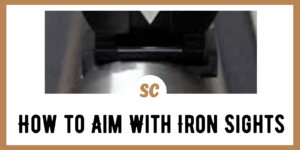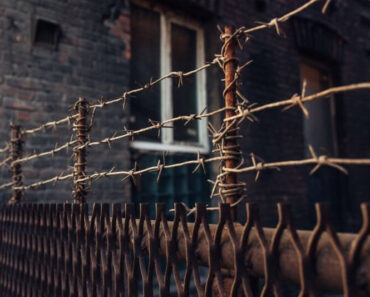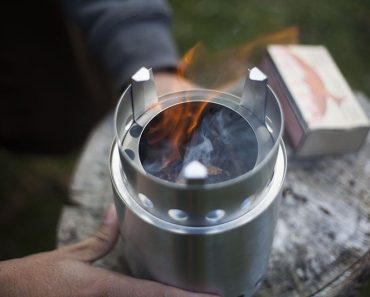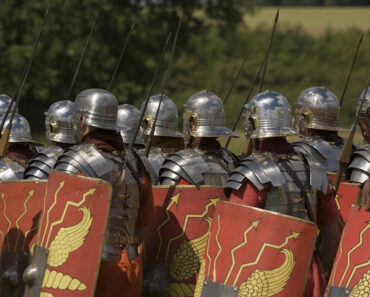Very few shooters don’t consider going into the field for a hunt with a rifle equipped only with iron sights.
We are all so ingrained in using our variable magnification scopes, red dots, or holographic sights that we often forget about iron sights. This can be a grave mistake should that optical sight fail amid that long-awaited hunt far from a gunsmith or gun store.
Optical sights are much easier to use than iron sights. For many shooters, iron sights pose a bit of a mental block since we are so accustomed to magnified optics that make accurate shooting so much easier.
However, optical sights can fail, while the iron sights on your rifle very rarely lose zero or fail – even after years of being neglected.
I encourage rifle hunters that I teach to practice as much with the iron sights on their rifles as they do with the telescopic optical sights they choose. Many of the shooting process principles apply to both kinds of sights. You will benefit in the long run. Learning accurate shooting form with iron sights is relatively easy and should be a skill every hunter possesses.
Why Should I Bother With Iron Sights?
I often asked hunters when they last sighted in their rifles. Most of the time, the answer is “right before we left.” My usual follow-up question is to ask when they sighted in their rifle with the iron sights. Most of the time, I get a quizzical look, a shrug of the shoulders, and something along the lines of “Never.”
I wonder what these intrepid individuals plan to do if they take a fall, stumble, or simply drop their rifles during the hunt and damage the scope. I suspect that for many of them, it will spell disaster and the early end of their hunt.
If this happens on a multi-day hunt far into the wilderness, it could ruin a long-awaited and very expensive expedition.
It’s Not Just About Backups to Your Optical Sights
Good rifle shooting should begin with good basic skills. It doesn’t matter what kind of sight system you use, the fundamental rifle shooting skills are the same. Good form, proper control, breathing, and sight picture all figure into shooting with an optical scope or iron sights. If you are skilled with iron sights, more than likely, your success with a scoped rifle will be much greater.
My first rifle was a Ted Williams 22LR Single Shot my dad gave me for my ninth birthday. It came with a box of 22 short ammunition and not much else. My shooting education began that minute as he schooled me in safely handling that little rifle. His instruction on using the iron sights has stuck with me for the rest of my life and, I believe, made me a better lifelong shooter.
Understanding Iron Sights
A basic understanding of the terminology and characteristics of iron sights is a good place to start a discussion of how to aim with iron sights.
Iron sights have two components, the rear sight and the front sight. Rear and front sights come in a variety of styles, from very simple to quite complex. I don’t have the space or time to discuss all of them, so I will limit myself to the most common rifle iron sights.
Rear Sights
The rear sight on most rifles that come from the factory pre-installed is a notch-style rear sight.
The sight usually features a small blade with some sort of notch or U-shaped cutout that forms the back part of the sight picture as you aim down the barrel of the rifle. Even something as simple as a notch rear sight can have almost unlimited variations in the design and shape of the sight.
Some rear sights feature an aperture sight. These peep sights often have two aperture sights used for closer precision shooting and a larger aperture sight used for longer ranges. Most aperture sights are adjustable for windage and elevation, making them more adaptable for target shooters.
Front Sights
The front sight on most modern rifles features a post front sight. Many are outfitted with dots or other fiber optic sights as night sights for low-light shooting. In most cases, the front sight is a blade fitted as close to the muzzle of the rifle as possible. In practice, having as much distance between the rear sight and the front sight is an advantage.
This distance is called the sight radius and is critical to accurate shooting. The longer the sight radius, the more accurate your iron sights are in the long run. When the front and rear sights are aligned, sights form a line from the rear sight, through the front sight, and on your target. The longer the sight radius, the easier it is to make this alignment using iron sights.
The Basics of How to Aim With Iron Sights
Many shooters believe that precise shooting is nearly impossible with iron sights. This misconception is widespread and far from the truth. Consider Olympic rimfire competitive shooters who routinely make use of nothing but iron sights during their competitions.
I also hear from hunters that their less-than-perfect vision makes using iron sights next to impossible. I must disagree with this as well. Proper form and practice can make using iron sights as natural as shooting with an optical sight.
Start with Safety
The very first thing with any shooting instruction or activity is to be mindful of safety. I remind every shooter I teach of my three basic rules for gun safety:
- Treat every gun as if it were loaded. The first thing I expect to see when I hand a student a rifle or pistol is to watch them check the action and the magazine to be sure that the rifle or pistol is in a safe condition. Never take someone else’s word for the condition of the firearm you are handling.
- Keep that trigger finger off the trigger until you are ready to fire. Trigger discipline is probably the biggest mistake I see among even the most seasoned hunters. The tendency to rest the trigger finger on the trigger is a bad habit.
- Never point the muzzle of your firearms at anything you don’t intend to shoot. I see many shooters who are adamant about gun safety and then step away from the firing line with their rifles and pistols, sweeping the muzzle around and across most of the other shooters in the area. Be constantly aware of where the muzzle points and ensure the area is safe.
Understand the Proper Sight Picture of your Rifle
There are many variations for front and rear sights, which makes a detailed description of what you may see when you align the sights on your rifle and find your sight picture.
In general, if you are using open sights, you will probably see three dots. Two of the dots are on either side of the rear sight notch, and the third dot, in the center of your sight picture, is on the front sight post.
Proper sight alignment should have the three dots equally spaced and aligned horizontally.
The rear notch sight may be slightly out of focus. You want to focus on the front sight and keep the dots in a straight line across your field of vision. This will ensure that the sights are in proper alignment and can be surprisingly accurate.
Peep Hole Rear Sight
If your rifle is equipped with an aperture sight, you can expect to see a different sight picture as you align the sights.
In the case of aperture sights, you will be presented with a ring and post in most cases. The principal thing to remember is to center the front blade in the rear sight ring with the front sight in focus.
Front Sight Focus
I will keep reminding everyone to keep the front sight in focus rather than the rear sight. Once you have proper sight alignment, the most important thing is positioning the front sight properly on your target.
Position the Front Sight on The Target
Once you have the front and rear sight properly aligned, you can focus on where to place the front sight on your downrange target. There are two schools of thought on where the front sight should align with your target.
One school suggests that the top of the front sight post should be just touching the bottom point of impact. The second school of thought insists that the top of the front sight blade should be in the center of your intended point of impact.
In either case, consistency is the key here. When you zero your rifles iron sights, decide which style of aim you prefer and then be consistent with your sight picture. You will find that your iron sights will perform consistently if you perform consistently.
The same principles hold true for a rear notch sight or a rear peep sight. The sight alignment is the key factor to shoot accurately with open sights.
Many people find a rear peep sight is an advantage in keeping the front and rear sights aligned when acquiring their sight picture on their target.
Breathing and Your Trigger
Just like shooting with an optical sight, breathing and trigger control are the key factors in an accurate shot. Breath control when you are on target is critical to keeping the sight picture aligned properly for a precise point of aim.
Basic breath control includes learning to time the natural rhythms of your breathing and heart to minimize sight-picture movement. A slight pause in breathing on the exhale will often be the best as you can steady your rifle and take your shot. There will still be some slight movement of your sights as your heart beats, but timing your shot with those movements is the proper method.
Trigger DIscipline and Trigger Control
Remembering our safety rules, we aren’t going to put that trigger finger on the trigger shoe until we are ready to take our shot. Place the front pad of your index finger with the trigger show centered on the finger pad.
Don’t make the mistake of hooking your finger over the trigger. This will certainly tend to pull your point of aim off to your strong side.
Good trigger control is a smooth action that is more squeeze than a jerk. Don’t try to get off a quick shot with a quick short trigger pull. Squeeze slowly and let the action of the trigger happen smoothly.
I often suggest that you should anticipate the trigger release but often be surprised when it happens. Concentrating on maintaining your sight picture is much more important than focusing on the trigger.
Are Optical Sights More Accurate than Iron Sights?
That is a debate that rages on seemingly without end. There are those who believe that optical sights in their modern incarnations are superior to iron sights. On the other hand, many shooters swear by their iron sights and claim just as good or better accuracy than optical sight systems. In truth, I think there is merit in both arguments.
The Advantages of Iron Sights
Even the most ardent fan of optical sights will usually admit that there are times when iron sights have advantages. One of the most obvious is when your optical sight breaks or fails when you need it most. A set of iron sights that are properly zeroed can save the day. Iron sights rarely fail. They don’t need batteries. The low profile of most iron sights keeps them out of harm’s way during rough handling or transport.
In my experience, anyone who is proficient with a rifle using iron sights is usually even more accurate with a properly mounted scope. The discipline needed to be accurate with iron sights tends to make shooters better when using an optical scope.
The Disadvantages of Iron Sights
Iron sights do come with their downsides. You cannot dial up a higher magnification to make your target easier to see with iron sights.
You also cannot adjust the diopter to adapt to your own eyesight. Shooting with iron sights and bifocals or trifocals can be a real challenge. I speak from personal experience on this matter. Iron sights can’t help with light gathering to make those low-light shots a little easier. You are limited by what you can see.
The Advantages of Optical Scopes
A good optical scope can help cope with an array of issues. A good variable magnification optical scope can make it much easier to acquire a sight picture and to make your shot.
I know as I get older and my eyesight is less keen, this feature of optical scopes becomes much more important.
In low light situations, most optical scopes will help with light gathering and transmission to give you that little extra clarity on your sight image. Many shooters claim that their optical scopes give them an extra 30 minutes of hunting time.
The Disadvantages of Optical Scopes
The greatest disadvantage to optical scopes, in my opinion, is the chance of something going wrong.
An optical scope has many small moving parts that must function perfectly to be accurate. This can be a weak point subject to failure at the most inopportune time. In addition, if you use a red dot or holographic optical sight, you are dependent on batteries for your rifle scope. Batteries a notorious for failing at just the wrong moment.
Which Would You Rather Have, Iron Sights or an Optical Sight?
Why make a choice? Most of my rifles, especially my AR platforms, are equipped with both an optical sight and a set of iron sights.
When possible, I arrange the iron sights so they can be used without having to dismount the optical sight. This may mean using slightly higher scope mounts with see-through bases to use the iron sights on a traditional rifle. My ARs are equipped with 45-degree offset iron sights for a quick and easy shift from the optic to the iron sights.
This does mean that I must know how to aim with iron sights as well as my optical sights. It also means more time keeping the sight alignment of both sets of sights properly adjusted. My choice for backup sights for my ARs is mil-spec with a two aperture rear sight that is windage and elevation adjustable.
In the End, The Key is Understanding the Basics and Practice
At the end of the day, it doesn’t matter if you choose iron sights or optical sights. What matters is whether you understand the fundamentals of using your sight and practice consistently to master the needed skills for accurate shooting.
My advice is to use both iron and optical sights. I think every shooter should be comfortable with either kind of sight system.










































